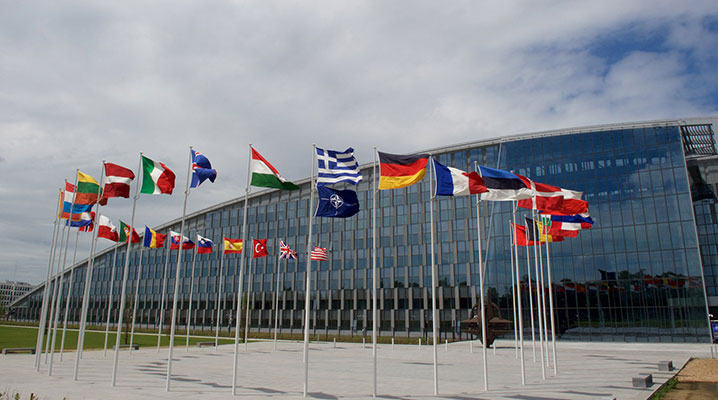What changes does NATO need to embrace to be able to meet the security and defence challenges of the 21st century?
By Julian Lindley-French
Leaders and thinkers from across the Euro-Atlantic community spent over a year considering the state of NATO and collective defence, as part of the GLOBSEC NATO Adaptation Initiative. Through a series of reports analysing shifting twenty-first century strategic, military, defence-industrial and technological changes, they offered food for thought on how the Alliance needs to further adapt to meet the challenges of a century in which the very idea of security and defence will be radically changed.
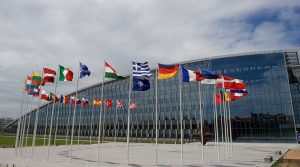
The flags of the 29 members of the Alliance fly in front of the new NATO headquarters – a symbol of NATO’s transformation for the 21st century.
Fifty years ago NATO adopted two important changes to its defence and deterrence posture. Flexible Response moved the Alliance away from the automatic and mutual assured destruction implicit in Massive Retaliation to a more layered and nuanced form of defence. The December 1967 Harmel Report established the twin-tracks of sound defence and dialogue and the principles of European security which endured for much of the ensuing years. Not anymore.
NATO is at a crucial decision point. With new technologies such as Artificial Intelligence and Quantum Computing fast entering the defence domain, the role, function, method and structure of the Alliance must undergo radical change if collective deterrence and defence is to remain credible.
Yes, the Alliance has adapted well in response to the watershed events of 2014, rebuilding deterrence against threats from the East, increasing its engagement with the Middle East, and forging a closer partnership with the European Union – and it is already taking steps in some of the other areas set out in the recommendations below. However, as the Alliance approaches its seventieth birthday in April 2019, NATO risks falling behind the pace of political change and technological developments that could alter the character of warfare, the structure of international relations and the role of the Alliance itself.
New strategic realities
Adaptation will only succeed if the Alliance confronts new geostrategic and transatlantic realities, including the need to deter a revisionist, militarily advanced Russia, while also projecting stability to NATO’s South, and dealing with threats posed by states such as North Korea. To establish equitable burden-sharing between the United States and its Allies, the Defence Investment Pledge made at the 2014 NATO Summit in Wales (Allied leaders agreed to halt the decline in defence expenditure and aim to move towards spending 2% of Gross Domestic Product on defence and 20% of national defence budgets on major equipment and related research and development within a decade) must also be honoured in full and new money spent well.
Flexible Response 2.0
NATO’s deterrence and defence posture must be strengthened if the Alliance is to prevent conflict and deter aggression. Enhancing the readiness and responsiveness of NATO conventional forces must be the Alliance’s overarching priority. NATO’s nuclear posture and strategy must also be modernised if the growing gap between the conventional and nuclear deterrents lowers the threshold for nuclear use.
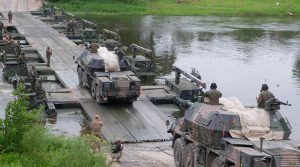
US and UK soldiers practise a river crossing with the Polish 15th Mechanized Brigade to ensure readiness to deter adversaries, and when necessary, defend the eastern part of the Alliance. © US Army by Spc. Kevin Wang
Warfighting ethos
Along with powerful, agile and resilient conventional forces, Allies need to adopt a warfighting ethos as core Alliance doctrine. NATO must re-establish the capacity for the swift generation of force mass and manoeuvre if NATO is to meet the force-on-force challenge. NATO should promote integrated deterrence, building on reforms to the NATO Command Structure, as well as undertake more systematic contingency planning, to ensure effective command and control across the conflict spectrum.
Military ambition
NATO must at least be able to command simultaneously operations in a large-scale state-to-state conflict (a Major Joint Operation-Plus) and undertake a sustained strategic stabilisation campaign to NATO’s South. NATO’s crisis management mechanisms are still far too complicated. NATO’s role in the defence of the global commons must also be enhanced with multi-domain forces able to operate to effect across air, sea, land, space, cyber, knowledge and information. NATO must train and think as it plans to fight. Impediments to battle-critical information-sharing must also be removed.
Counter-terrorism
The terrorist threat to the Euro-Atlantic Area will increase. NATO’s Counter-Terrorism Policy Guidelines and NATO’s support for the Global Coalition Against Daesh are vital. NATO must also contribute more to preventing terrorist attacks on its members, including home-grown plots. While this is primarily a national and EU responsibility, with law enforcement and interior ministries in the lead, NATO’s newly upgraded Joint Intelligence and Security Division, with its secure communications links to Allied capitals, could become a clearing-house for exchanging classified terrorist threat information.
Defence and dialogue
NATO must engage with Russia and Ukraine on the basis of principle: A new political strategy is needed for NATO to better engage with Russia. Dialogue must go hand-in-hand with defence with the goal of managing competition and reducing risks until fundamental differences that prevent a return to cooperation with Russia are resolved. At the same time, the Alliance must help Ukraine, Georgia, and other Eastern European neighbours to defend themselves and continue to promote the Euro-Atlantic integration of the Western Balkans. The Open Door policy, and the possibility of future membership, must also be upheld.
A broad security agenda
The enduring mission in Afghanistan is a reminder that the security of the Alliance does not stop at its borders. NATO needs a broader security role to reinforce the engagement of the Alliance across the Middle East, North Africa and beyond. Defence capacity-building to NATO’s South will be an important contribution to peace and security, working closely with regional security institutions, such as the African Union and the Arab League, as well as with individual partner nations.
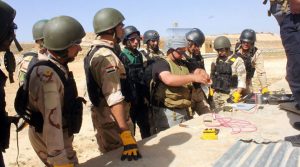
NATO’s commitment to support partners such as Afghanistan in building their defence and security capacity helps project stability as well as contributing to the security of the Alliance. © NATO
Smart NATO
If the Alliance is to both protect people and project influence and power, NATO should better integrate the many centres of excellence into a network of excellence, and establish new centres to address new challenges. A bespoke Hyper War Centre of Excellence would help generate an urgently needed coherent approach to future war, including work on Artificial Intelligence and expanded NATO cyber defence within its defence and deterrence measures. Such a Centre would necessarily need to train and educate NATO’s civilian and military leadership, and include staff courses for the North Atlantic Council, NATO staff and and member nation civilians.
The vital NATO-EU Strategic Partnership
The European Union will become an increasingly important foreign and security actor and partner of NATO, with the NATO-EU strategic partnership increasingly important for the management of transatlantic relations. For many Europeans, the EU Common Security and Defence Policy will be a, if not the vehicle for defence policy. The European Defence Agency will also be the mechanism of choice for the development of military capabilities for many Europeans. Therefore, NATO and the European Union must overcome current barriers to foster a more substantial and mutually beneficial partnership and reinforce practical cooperation. A NATO-EU summit at heads of state and government level should be held at least once a year.
NATO’s wider strategic partnerships
NATO must also create a world-wide network of strategic partnerships and institutions. Indeed, at a time of globalised security NATO needs to better forge functional political, civilian and military partnerships across the world. The creation of consultative councils with states such as Australia, China, India, Japan, and South Korea would be an important indicator of such ambition.
Equipping and affording NATO
NATO must innovate as an alliance and streamline the delivery of new technology and equipment. On average it takes 16 years from conception of military capability to operational effect, which is far too long. Capability fielding timelines must be shortened and commanders given a greater say in requirements development. NATO should promote a common standard for shared assessment, harmonised requirements and common specifications, and expand the use of common funding, and conduct an Alliance-wide platform and systems audit as part of a Future Requirements Framework.
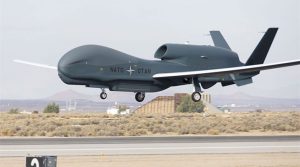
The new Alliance Ground Surveillance system consists of air, ground and support segments, performing all-weather, wide-area terrestrial and maritime surveillance. It will be able to contribute to a range of missions. © NATO
Partnerships with defence industry – old and new
NATO must gain a far better understanding of the impact of new technologies such as Artificial Intelligence and Quantum Computing together with their defence applications. Many of the companies driving new technologies are not defence giants, nor are many of them defence-focused. Such companies will need to be sure that if they invest limited people and resources on NATO projects, their existence will not be threatened by sclerotic acquisition practices.
NATO and the future of war
NATO needs a future war strategy that fully integrates hybrid warfare, cyber war, counter-terrorism and hyper war, and the continuum between them. Critically, NATO must leverage the impact of new technologies on the security space and battlespace. NATO must better grip and exploit new information technologies, and systematically trawl newly-available artificial intelligence-powered capacities to exploit big data. To that end, NATO should consider creating an agency similar in mission to that of the US Defense Advanced Research Projects Agency.
Next steps?
NATO leaders should commission a strategy review, which might be embodied in a new Strategic Concept. NATO needs a forward-looking strategy that sets out how the Alliance will meet the challenges of an unpredictable and fast-changing world.
Julian Lindley-French is Senior Fellow at the Institute of Statecraft in London, a Distinguished Visiting Research Fellow at the National Defense University in Washington, and Fellow of the Canadian Global Affairs Institute. He was Lead Writer for the Steering Committee of the GLOBSEC NATO Adaptation Initiative.
© NATO Review

